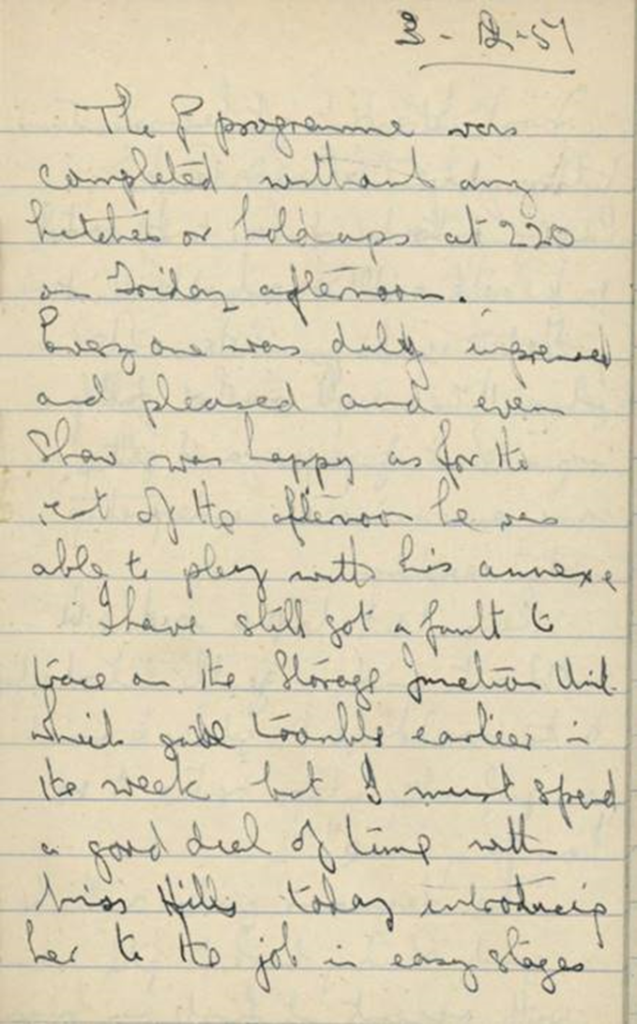Helen Clews (nee Garsed) I joined Leo Computers on 24th September 1962, starting with the five-week basic course at Hartree House. From October 1962 to early 1963 I was in the mathematical programming section at Minerva Road, Acton. In early 1963 I was transferred to the Training and Technical Writing section at Hartree House where I worked on writing manuals and organising and lecturing on training courses – mainly on Intercode and CLEO; but later we developed a senior programming course covering software such as The Master Programme and Compilers. The regular courses were at Hartree, but a few were on customers’ premises. I particularly remember giving a course at the GPO offices in the Barbican at the time when the Barbican Centre and flats were being built. I moved to Radley House in South Ealing when the Training Department was re-located there. I can’t remember the date but guess it was in 1964. Whilst there I continued to organise and lecture on courses in a much-expanded department.
In June 1965 I married Richard Clews, a senior programmer and systems analyst with LEO, and we went on his three-year contract to Australian Computers in Melbourne, where a branch of English-Electric-LEO-Marconi was being established. I trained the staff of Australian Computers on programming the new System 4 machine, and was sent to New Zealand with two others from the Sydney office to give a ten-day course for the NZ Post Office, who had just bought a machine (I can’t remember exactly, but I think they bought two LEO 111s) (Editor: Sale did not succeed). Soon afterwards, EELM merged with ICT to become ICL. I left the company in October 1966 to teach Maths. in a local secondary school for the remaining two years of our stay in Australia. We returned to the UK in January 1969. Richard worked for ICL for most of the rest of his working life. I taught at a grammar school in Chesham, Bucks., mainly concentrating on Maths., but for a short time I taught AS level computer studies, which included a component on the history of computing. I was teaching LEO as history! My transfer back to Hartree House was the start of my happy time with LEO. It was a wonderful place to work and I very much enjoyed organising courses and doing technical writing. With so many recent graduates being recruited, it was like university, but with money. I started buying books and records from Whiteleys, we had picnics in Kensington Gardens and in the summer after work we could walk across the gardens to queue for tickets to the Proms several times a week. Magic! https://www.dropbox.com/s/rz9or0qq7xh3mgv/Helen%20Clews%20nee%20Garsed%20Recollections.docx?dl=0


